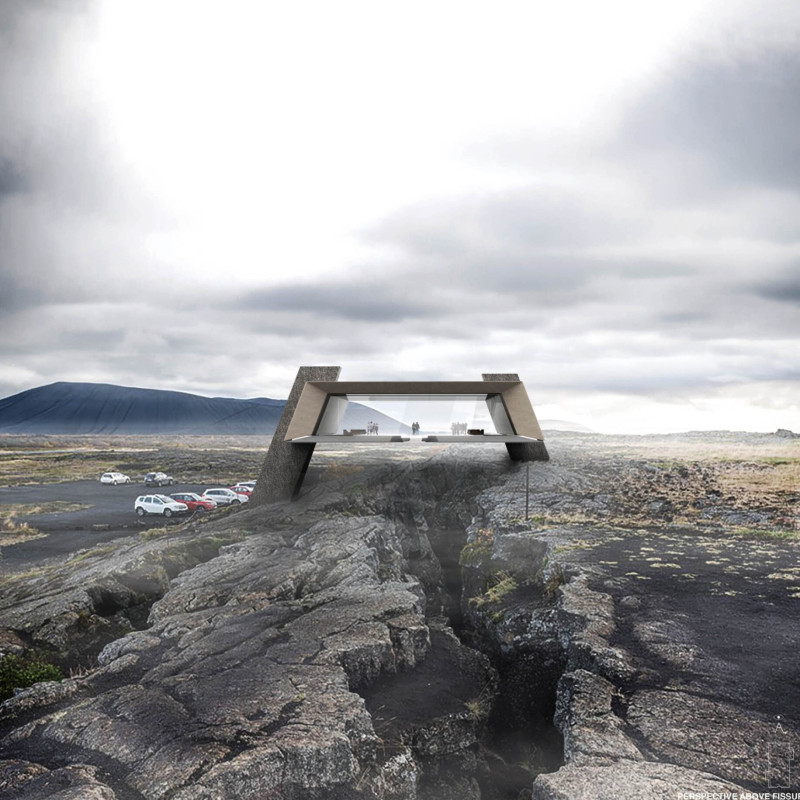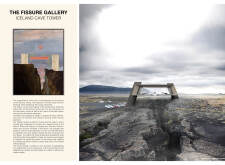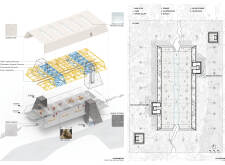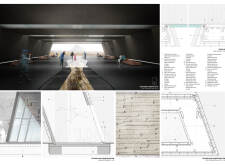5 key facts about this project
The primary function of the Fissure Gallery is to provide an immersive experience that connects visitors to the geological history of the area. The structure features open spaces for exhibitions, educational programs, and relaxation, allowing users to explore the relationship between architecture and nature. The integration of large glass panels enhances visibility and invites natural light, establishing a continuous dialogue between the interior and the exterior environment.
Unique Design Approaches
The architectural design incorporates a zigzag platform that mimics the geological fissures present in the landscape. This form not only enhances aesthetic qualities but also facilitates movement, encouraging visitors to engage with various elements of the gallery. Materials such as fiber cement, ledge stone, and gap glass have been selected for their resilience and connection to the surroundings. The ledge stone cladding reflects the local geology, while the gap glass provides unobstructed views of the site’s prominent volcanoes, Krafla and Hverfjall.
The spatial configuration of the Fissure Gallery promotes a sense of exploration. Key areas include an open office designed for educational activities, a lounge space for visitors, and exhibitions that showcase the geological processes of the region. Each interior space is strategically situated to maximize light and views, ensuring a cohesive interaction between the gallery and the dramatic Icelandic landscape.
Sustainability is a critical aspect of this project. The use of locally sourced materials reduces transportation impacts, and the design incorporates natural heating and cooling strategies, minimizing energy consumption. The integration of wooden and steel components offers versatility while maintaining structural integrity.
For those interested in a comprehensive understanding of the Fissure Gallery, further exploration of architectural plans, sections, and detailed designs will provide deeper insights into the project’s objectives and execution. Each element of the architecture reflects a commitment to environmental integration and user experience.


























